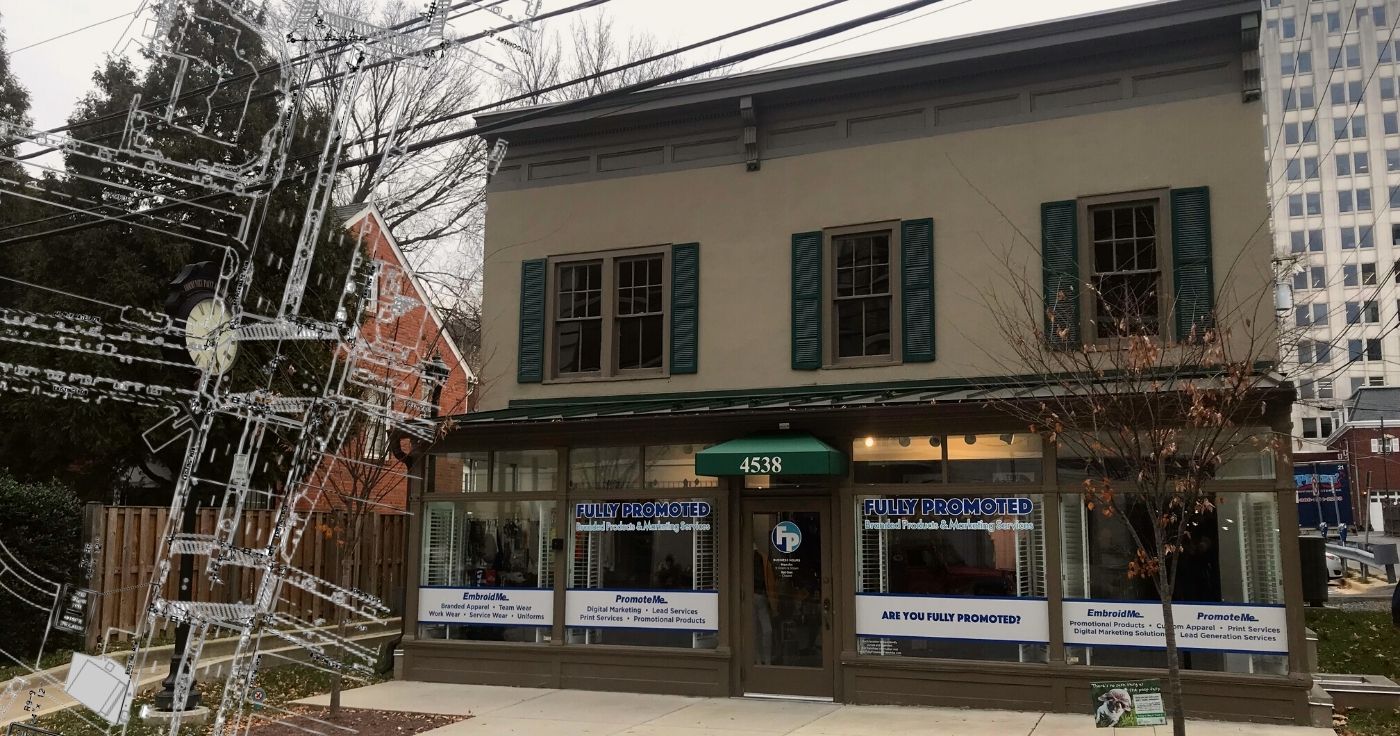“You want to do what? Relocate a historic house half a mile down the middle of an urban six-lane roadway?”
Construction projects often require a Traffic Control Plan (TCP) to keep vehicular and pedestrian traffic moving, but this project sounded particularly complicated and daunting.
“OK, no problem.”
Thus said Senior Associate Larry Sefcik who has been a member of the Wells + Associates engineering and design team since 1998. “We’ll get right on it!” As you can see, Larry has a positive disposition – something we love and appreciate.
The house in question was the former Community Paint and Hardware store, a two-story building designated as a historic site by Montgomery County, Maryland in the 1980s. Located at 7250 Wisconsin Avenue prior to the move, the house is the only 19th-century building remaining in downtown Bethesda and was most recently the home of United Bank.
Moving a House Down an Urban Street While Maintaining Vehicular and Pedestrian Traffic
At the time Larry didn’t quite know what he was getting himself into but knew that the W+A team could rise to the challenge. The project proved to have more than the usual share of variables and challenges, but he had been around long enough to know that if the project had been easy, “someone else would have already done it.”
Said Larry: “We’ve prepared many TCPs [or Maintenance of Traffic (MOT)] plans for construction and utility work including lane closures, street closures, pedestrian and vehicle detours, and even traffic maintenance for a parade, but not really to move a house down the middle of an arterial roadway.”
The move was sensitive since the historic house and the proposed “The Wilson and The Elm” development to be built on the site are located in downtown Bethesda, a thriving urban center just outside of Washington, DC and home to a concentration of restaurants, retailers, office buildings, and arts venues – plus vehicles and pedestrians.
Over the past 30 years, we have taken on many challenging projects, but sometimes it’s the ones that involve many stakeholders and difficulties that prove the most rewarding. Projects that involve a TCP or MOT are often complicated and demand creativity and a lot of teamwork, such as the construction of a new museum that involved street closures or maintaining regional traffic on a major bridge while it’s being repainted.
After numerous meetings with state and county staff, police, house movers, the project team, and many other stakeholders, a plan was developed to relocate the house. The TCP included:
- Portable variable message signs, cones, and other traffic control devices that were positioned strategically around the area to warn motorists of the impending move.
- Traffic signal crews who were stationed at the signalized intersection to unbolt the signal arms from the poles.
- A crew that operated a crane with a harness to rotate the arms so that the two-story structure could be moved through several intersections without incident.
- Police who were present to assist in traffic control and safety.
Prior to the move, the house was cut in two. As Bethesda Magazine reported, “From around 11 p.m. Saturday to early in the morning Sunday, crews loaded each half onto a large flatbed semi-truck and drove the two pieces to the parking lot a half mile away.”
The move was quite the event. As Larry joked, with onlookers and local restaurant patrons gazing at the scene, “Is it a bird? Is it a plane? No! it’s a house on wheels! Moving right down the street!”

